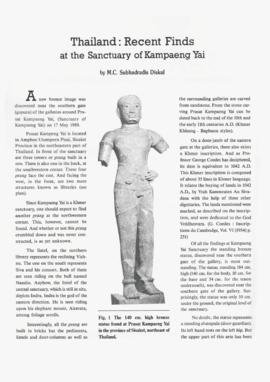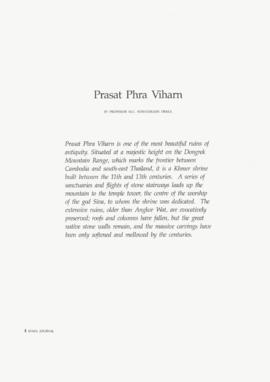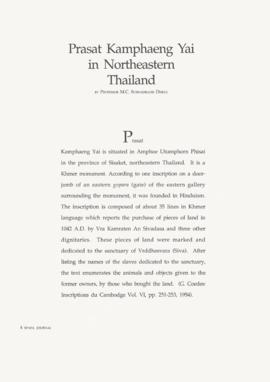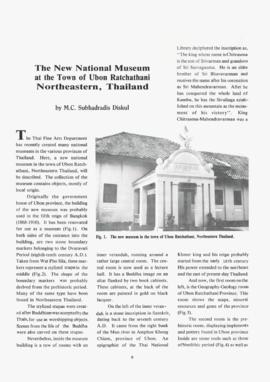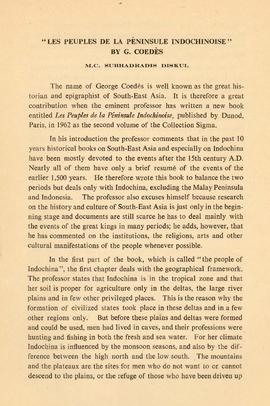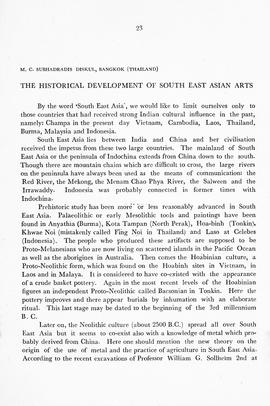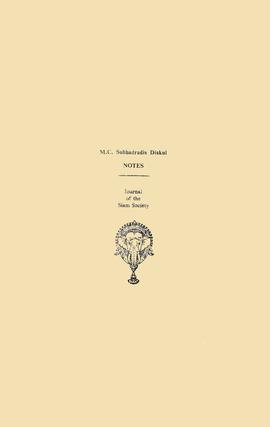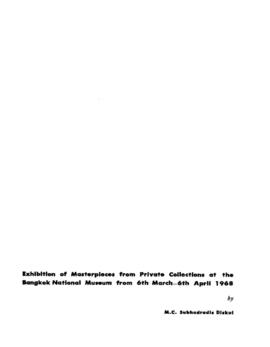Thailand : Recent Finds at the Sanctuary of Kampaeng Yai
- TH Subhadradis 02 ACAR-01-115
- Item
- 1990
Part of บทความ
A bronze image was discovered near the southern gate (gopura) of the galleries around Prasat Kampaeng Yai, (Sanctuary of Kampaeng Yai) on 17 May 1989. The statue, standing 184 cm. high (140 cm. for the body, 10 cm. for the base and 34 cm. for the tenon underneath). The statue represents a standing dvarapala (door-guardian).
Professor Jean Boisselier, a French expert on khmer art thinks this bronze statue represents Nandikesvara or Nandisvara, chief of the gana (attendants of Siva). Because of his loyal services, Siva allowed Nandikesvara to change his primitive appearance, which resembles a monkey, to the likeness of Siva. And even if the statue is not really Nandikesvara, Professor Bossolier still thinks this bronze statue is a door-guardian. The way it was gilded and its excellent execution are invitations to suppose that this statue must have stood in front of the central sanctuary of Prasat Kampaeng Yai, or even inside its porch.
ศ. ม.จ. สุภัทรดิศ ดิศกุล

